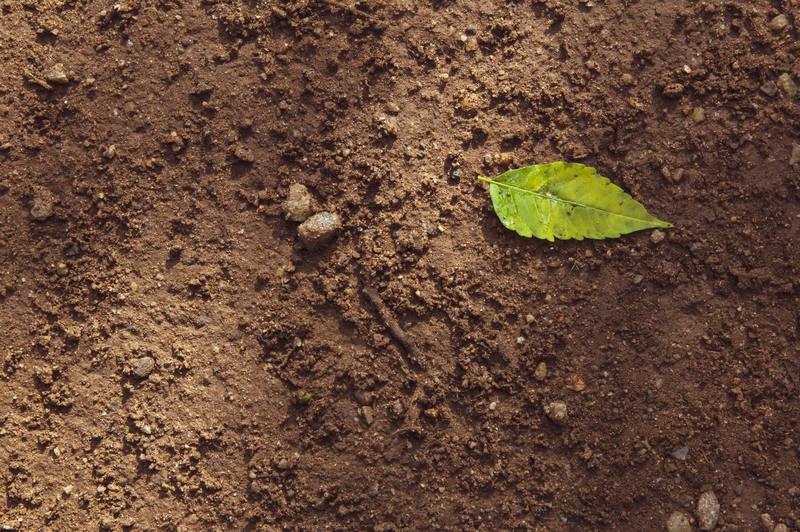Garden enthusiasts would love to know how do you get rid of powdery mildew in soil. It’s not really a million-dollar question so you can find guides anywhere just like this one!

What Is Powdery Mildew?
Powdery mildew is a fungus that affects a wide range of plants and trees. It is rarely lethal, although it does have the potential to impair plant vigor.
Controlling the fungus can be done in a number of ways, including appropriate cultural practices. Additionally, neem oil can be used to treat powdery mildew.
Powdery mildew affects a wide range of plant and vegetable species, however it is not induced by a single fungus. Powdery mildew is caused by several fungal genera, including Erysiphe, Leveillula, and Golovinomyces, each of which attacks only one variety of plant.
The white or gray powdery growth that grows on the plants is immediately identifiable as the illness. Powdery mildew spores, unlike those of other diseases, do not dwell in the soil and are spread from plant to plant by the wind.
To know more about its appearance, browse through this guide about what does powdery mildew look like.
They can also survive the winter on dead plant fragments that have dropped to the ground or on sick plants. To prevent the spores from spreading, pick up and eliminate any damaged plant parts as soon as possible.
When the temperature is between 60 and 80 degrees Fahrenheit and the humidity is high, powdery mildew diseases are most likely.
Make sure the plants are appropriately distributed and have plenty of airflow to avoid infection.
Keep foliage dry by avoiding sprinklers or overhead watering. Plant powdery mildew-resistant cultivars if at all possible, and alternate crops in your vegetable garden.
How To Kill Powdery Mildew In Soil
There are many ways to get rid of powdery mildew in soil. Browse through the following tips.
1. Soil solarization
Temperatures above 90 degrees Fahrenheit may destroy certain powdery mildew spores. Soil solarization is a procedure that causes high temperatures in the soil, which can destroy spores residing on dead plant material as well as other pathogens if you don’t want to use chemical controls.
Solarization of the soil is most effective when the weather is warm and sunny. Remove any rubbish or rocks from your garden’s soil and break up any huge clods of earth.
Irrigate the soil and smooth the surface. Before the dirt has an opportunity to dry, cover it with clear plastic.
Make sure there are no air pockets between the plastic and the dirt, and fasten the plastic’s edges.
Allow four to six weeks for the plastic to cure. The sun’s heat will warm the soil during this time, and the plastic will keep the heat in.
At a depth of 18 inches, this procedure can heat the soil to 90 to 98 degrees Fahrenheit. The soil’s upper layers will be even warmer.
After discarding the plastic, you can begin planting straight away.
2. Using fungicide
Fungicide treatments can be applied to affected plants to assist control serious disease. Try neem oil, sulfur, or potassium bicarbonate for powdery mildew if you want to use organic fungicides.
Sulfur and potassium bicarbonate, unlike certain chemical choices, do not cause fungus to grow resistant. Sulfur should not be utilized in temperatures above 85 degrees Fahrenheit because burnt leaves can result.
Expect to wait two weeks after using a sulfur spray before adding neem oil.
Baking soda and water can also be used to generate a powdery mildew spray. Simply combine 1 teaspoon baking soda and 1 quart water in a spray bottle and spray your plants.
This will change the pH and aid to prevent the growth of powdery mildew.
Powdery mildew can be controlled with chemical fungicides, such as those containing trifloxystrobin or azoxystrobin, on a variety of plants in your yard. If the fungus is doing havoc on your vegetable plants, ensure that any fungicide you use is marked for use on plants.
Make careful to read the product label for all cautions and usage directions. Fungicides contain harmful chemicals and you apparently want adverse effects for using it.
Prevention Tips
The most cost-effective method of managing powdery mildew is to prevent its development and/or severity. Temperatures of 50-65 degrees Fahrenheit, with humidity levels ranging from 80 to 90%, are ideal for powdery mildew growth.
Minimize low-temperature, high-humidity conditions to discourage powdery mildew from starting in the first place.
Low humidity levels are ensured through good air circulation, which inhibits the establishment of powdery mildew. Plants that are too close together offer too much shadow for the bottom leaves, which stimulates the growth of fungi.
High temperatures are not friendly to powdery mildew. Because the sun’s intense rays destroy spores before they can proliferate, direct exposure to sunlight aids in the prevention of mildew infestation.
It would also be helpful to know its lifespan. Know more about this in this article about how long do powdery mildew spores live.
Conclusion
Knowing how to get rid of powdery mildew in soil will make you and your environment more stress-free! Ease your worries and go back to this article whenever needed.
